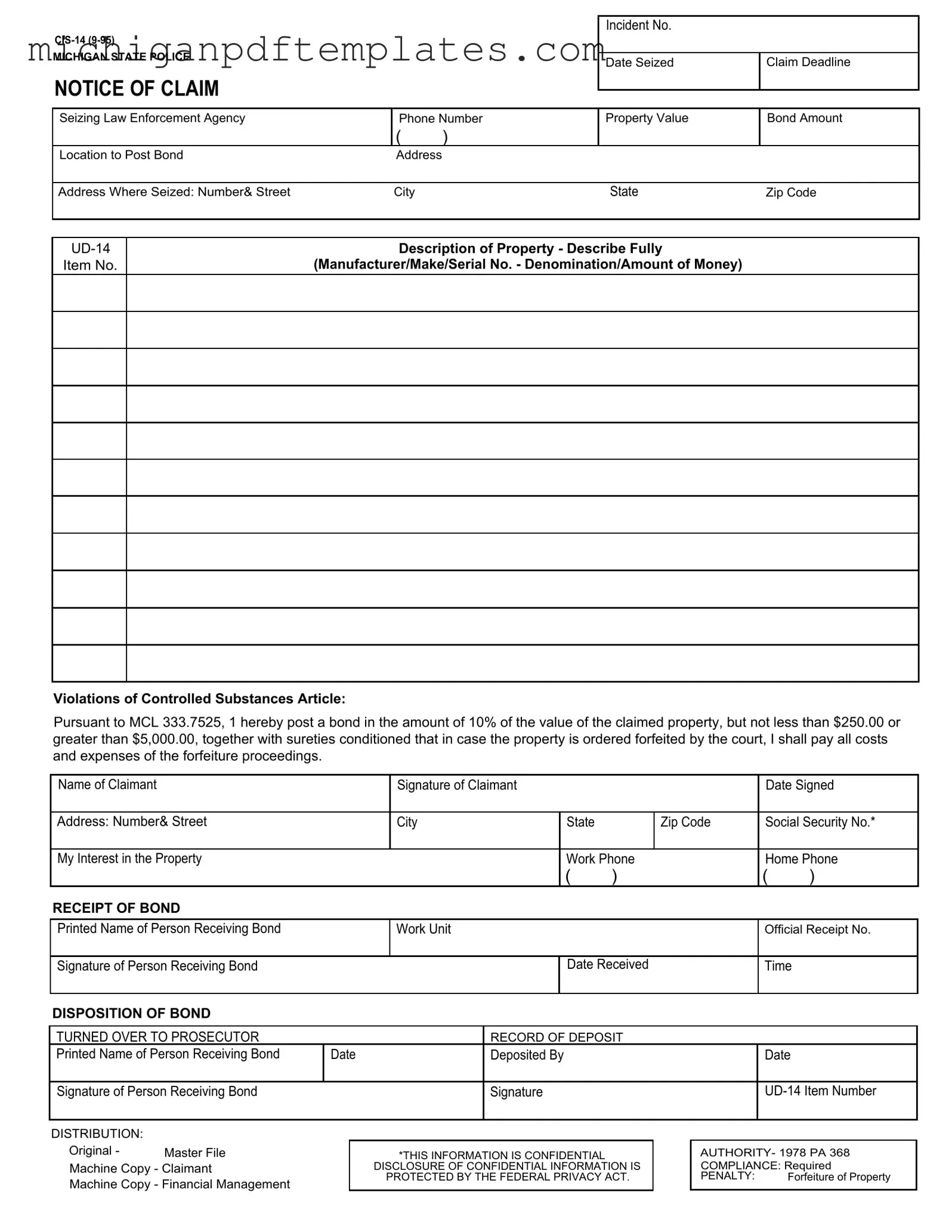The Michigan CIS 14 form serves as a critical document in the context of property seizure by law enforcement agencies. It captures essential details surrounding the seizure of property, including the incident number, the date of the seizure, and the agency responsible for the action. Claimants are required to provide a comprehensive description of the seized property, which must include specifics such as the manufacturer, make, and serial number, as well as the monetary value of the property. This form also outlines the necessary steps for posting a bond, which is mandated under Michigan law. The bond amount must be 10% of the property's value, with a minimum of $250 and a maximum of $5,000. Claimants must sign the form to affirm their interest in the property and acknowledge their responsibility for any associated costs should the property be forfeited. The document also includes sections for law enforcement to acknowledge receipt of the bond and for record-keeping purposes, ensuring transparency in the process. Additionally, the form emphasizes the confidentiality of the claimant's personal information, in compliance with federal privacy regulations, highlighting the balance between law enforcement's needs and individual rights.
